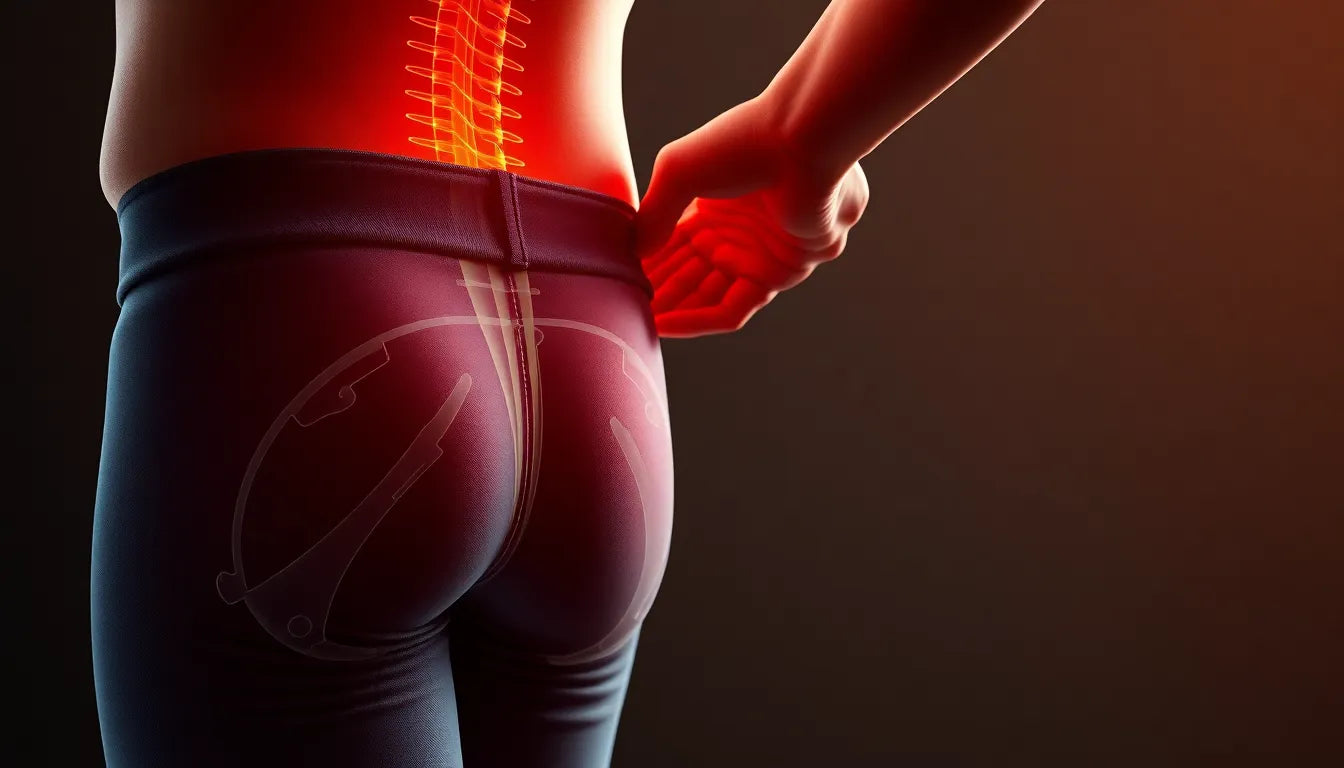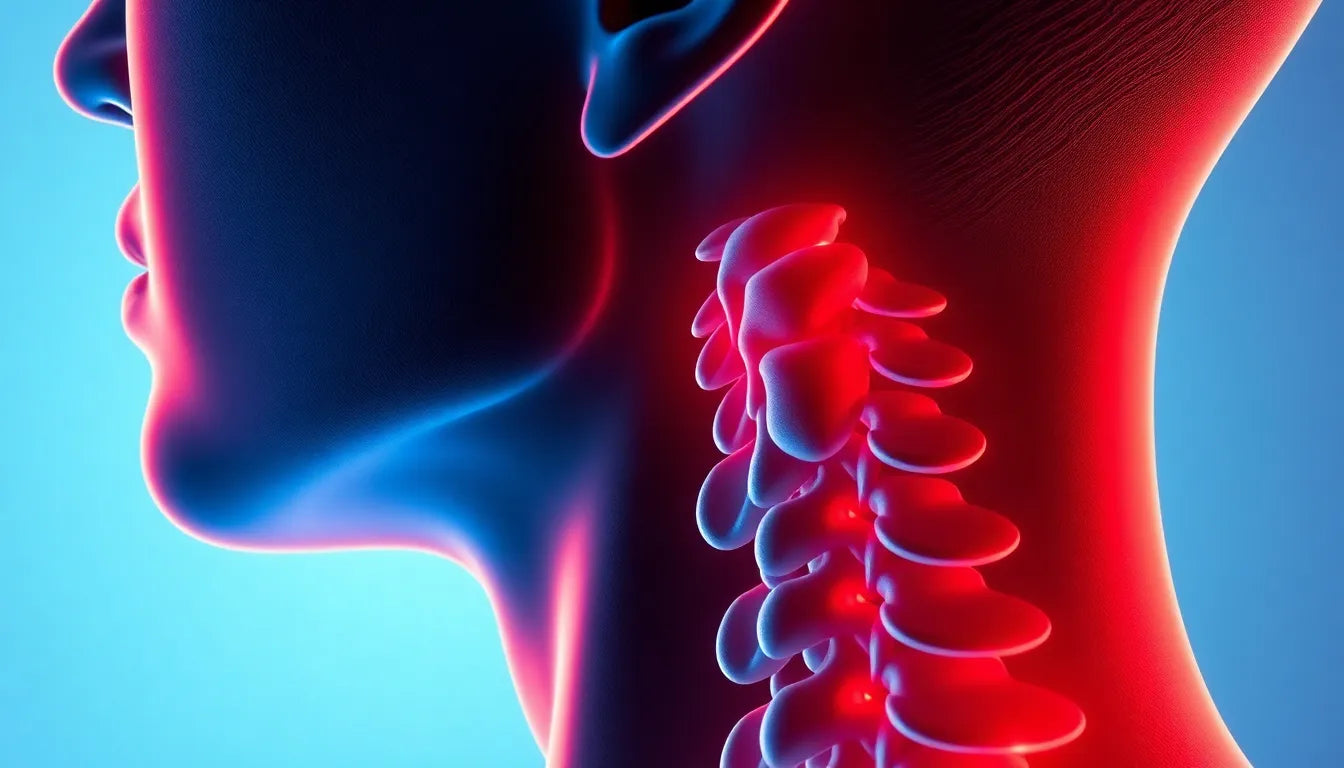Experiencing a herniated disc can be a daily struggle, particularly when the pain intensifies as you sit. This common issue is a significant concern in our modern, sedentary lifestyles, where prolonged sitting is often unavoidable. Many find themselves trapped in a cycle where sitting, an activity integral to work and leisure, exacerbates their discomfort.
Understanding the intricacies of a herniated disc is crucial to managing its symptoms effectively. A herniated disc occurs when the soft inner core of a spinal disc pushes through a crack in the tougher exterior casing. This can lead to nerve irritation, resulting in pain, numbness, or weakness in an arm or leg. While these symptoms can occur in various positions, sitting often seems to worsen them, creating a unique set of challenges for those affected.
When you sit, especially for extended periods, the pressure on your spinal discs increases significantly compared to standing. This increased compression can intensify the pain associated with a herniated disc, making it difficult to find relief. The act of sitting also tends to encourage poor posture, which can further strain the spine and exacerbate symptoms. For those dealing with a herniated disc, understanding why sitting is particularly problematic is an essential step towards finding effective pain management strategies.
The purpose of this post is to delve into the reasons sitting can make a herniated disc feel worse and to explore practical solutions that can help alleviate this discomfort. By examining the mechanics of sitting and its impact on spinal health, we aim to provide insights and strategies that empower you to take control of your pain and improve your quality of life. Whether it's through adopting better posture, incorporating ergonomic furniture, or simply taking more frequent breaks, there are numerous ways to mitigate the adverse effects of sitting on a herniated disc.
the impact of sitting on herniated discs
Sitting is an integral part of daily life, yet it can significantly worsen the discomfort caused by a herniated disc. This is primarily due to the increased spinal compression that occurs when seated. According to insights from Petro Cohen, P.C., sitting can increase spinal compression by up to 30% compared to standing. This additional pressure on the spine can exacerbate the pain and discomfort associated with a herniated disc.
Biomechanically, when you sit, the angle of your hip changes, causing the lumbar spine to flex. This flexion increases the pressure on the intervertebral discs, especially in the lower back region. For someone with a herniated disc, this added compression can push the disc further out of its normal position, aggravating the nerves and intensifying pain. Understanding these mechanics is crucial for developing strategies to reduce discomfort while sitting.
posture and ergonomics: keys to comfort
Maintaining proper posture is essential for minimizing the impact of sitting on a herniated disc. A neutral spine position helps distribute weight evenly and reduces undue stress on the spinal discs. To achieve this, ensure your feet are flat on the ground, your knees are at hip level, and your back is supported by a chair with adequate lumbar support. These adjustments can significantly alleviate pressure on the spine and help manage pain.
Ergonomic furniture plays a vital role in creating a supportive sitting environment. When selecting chairs and desks, look for features such as adjustable height, lumbar support, and seat depth. These elements help maintain proper posture and reduce strain on the spine, making sitting more comfortable for those with a herniated disc. Investing in ergonomic solutions can make a substantial difference in managing pain and improving overall spinal health.
practical tips to mitigate pain
In addition to posture and ergonomic furniture, incorporating regular breaks into your routine is crucial for managing herniated disc pain. Frequent standing breaks help relieve spinal pressure by allowing the discs to decompress. A useful guideline is the "20-8-2 rule": sit for 20 minutes, stand for 8 minutes, and move for 2 minutes. This routine encourages movement and helps prevent the build-up of pressure on the spine.
Supportive seating accessories can also be beneficial. Using a rolled-up towel or a small pillow to support the lower back can help maintain the spine's natural curve, reducing discomfort. These simple aids can be easily incorporated into any seating arrangement, providing immediate relief and promoting a healthier sitting posture.
By understanding the impact of sitting on herniated discs and implementing these strategies, you can take proactive steps to manage pain and improve your quality of life. Whether through posture adjustments, ergonomic furniture, or regular breaks, there are effective ways to alleviate the discomfort associated with sitting and a herniated disc.
Daily activities and lifestyle adjustments
Living with a herniated disc requires mindful adjustments to daily activities to minimize discomfort. Incorporating movement into your routine is essential. Gentle stretches and exercises can be performed while seated or during breaks to maintain flexibility and reduce tension. Simple exercises such as seated leg lifts or gentle spinal twists can be effective in keeping your muscles engaged and your spine supported.
In addition to movement, attention to sleeping positions can significantly impact spinal health. Optimal sleeping positions include lying on your back with a pillow under your knees or on your side with a pillow between your knees. These positions help maintain the spine’s natural alignment and reduce pressure on the herniated disc, contributing to improved comfort during rest.
Conclusion
In conclusion, managing a herniated disc involves a comprehensive approach that considers posture, ergonomics, and regular movement. By understanding the reasons why sitting exacerbates herniated disc pain, you can take proactive steps to alleviate discomfort. Whether through adopting better posture, investing in ergonomic furniture, or incorporating frequent breaks and supportive accessories, there are numerous strategies to improve your quality of life.
Remember, being mindful of your posture and making ergonomic adjustments can significantly mitigate the adverse effects of sitting on a herniated disc. These changes not only help manage pain but also promote overall spinal health, allowing you to navigate daily activities with greater ease and comfort.
Frequently Asked Questions
Why does sitting make a herniated disc worse?
Sitting increases spinal compression and reduces blood flow, which can exacerbate a herniated disc. The seated position alters the angle of the hips and lumbar spine, increasing pressure on the intervertebral discs, particularly in the lower back. This added pressure can push the disc further out of its normal position, aggravating nearby nerves and intensifying pain.
What is the best sitting position for someone with a herniated disc?
The ideal sitting position for someone with a herniated disc involves maintaining a neutral spine. Ensure your feet are flat on the ground, knees are at hip level, and your back is supported by a chair with adequate lumbar support. Using a small pillow or rolled-up towel for additional lower back support can also help alleviate pressure on the spine.
How often should I take breaks from sitting?
It is recommended to take breaks every 20 to 30 minutes. Following the "20-8-2 rule" is effective: sit for 20 minutes, stand for 8 minutes, and move for 2 minutes. This routine encourages movement, helps relieve spinal pressure, and prevents the build-up of tension in the back.
Can ergonomic furniture really help with herniated disc pain?
Yes, ergonomic furniture can significantly help reduce strain and promote a healthier sitting posture. Chairs and desks with adjustable height, lumbar support, and proper seat depth are designed to maintain proper posture, distribute weight evenly, and reduce stress on the spinal discs.
Are there any specific exercises that can help relieve pain while sitting?
Yes, there are several exercises that can be performed while sitting to maintain mobility and reduce discomfort. Seated leg lifts, gentle spinal twists, and neck stretches are effective in keeping muscles engaged and supporting spinal health. These exercises help maintain flexibility and reduce tension, providing relief from pain associated with prolonged sitting.


















